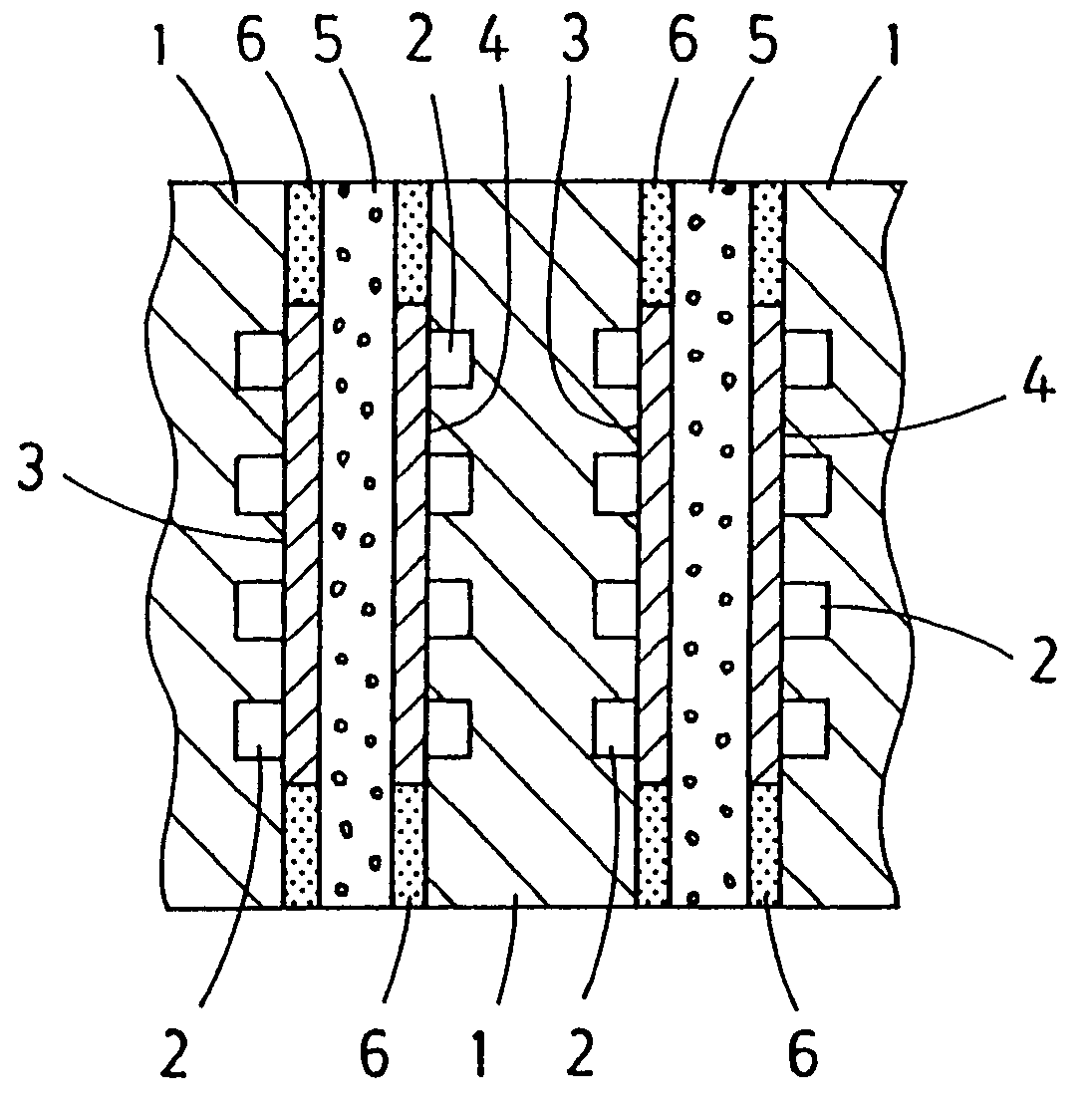Separator material for solid polymer fuel cell and process for producing the same
a solid polymer fuel cell and separator material technology, applied in the direction of non-metal conductors, cell components, conductors, etc., can solve the problems of affecting the performance of the cell, affecting the quality of the product, etc., to achieve the effect of improving the moisture resistance, and improving the dissolution rate of organic substances
Inactive Publication Date: 2010-06-22
TOKAI CARBON CO LTD
View PDF4 Cites 4 Cited by
- Summary
- Abstract
- Description
- Claims
- Application Information
AI Technical Summary
Benefits of technology
The present invention provides a polymer electrolyte fuel cell separator material that exhibits excellent properties such as gas impermeability, strength, electric conductivity, and corrosion resistance. The material has low water absorption and elongation, low ammonia production, and low organic substance dissolution. The invention also provides a method of producing the separator material using a specific mixture of resins and a curing accelerator. The technical effects of the invention are to improve the performance and durability of the fuel cell by using a separator material with high gas impermeability, low electric conductivity, and low mechanical strength.
Problems solved by technology
However, since the phenolic resin produces water of condensation during curing, the condensation water partially remains in the cured resin molded product to impair the texture.
Therefore, it is difficult to form a material texture with high gas impermeability.
As a result, a small amount of ammonia remains in the graphite / cured resin molded product.
Since the polymer electrolyte fuel cell is exposed to a wet environment during operation due to water produced by gas humidification or cell reaction, cooling water, and the like, ammonia remaining in the separator is dissolved into the cell as ammonium ions to hinder the movement of protons in the electrolyte membrane or decrease the catalytic function of the electrode, thereby causing the cell performance to deteriorate.
Method used
the structure of the environmentally friendly knitted fabric provided by the present invention; figure 2 Flow chart of the yarn wrapping machine for environmentally friendly knitted fabrics and storage devices; image 3 Is the parameter map of the yarn covering machine
View moreImage
Smart Image Click on the blue labels to locate them in the text.
Smart ImageViewing Examples
Examples
Experimental program
Comparison scheme
Effect test
examples
[0049]The present invention is described below in detail by way of examples and comparative examples.
the structure of the environmentally friendly knitted fabric provided by the present invention; figure 2 Flow chart of the yarn wrapping machine for environmentally friendly knitted fabrics and storage devices; image 3 Is the parameter map of the yarn covering machine
Login to View More PUM
| Property | Measurement | Unit |
|---|---|---|
| water absorption elongation percentage | aaaaa | aaaaa |
| temperature | aaaaa | aaaaa |
| pressure | aaaaa | aaaaa |
Login to View More
Abstract
A separator material suitable for a polymer electrolyte fuel cell and a method of producing the same. The separator material exhibiting gas impermeability, strength, dimensional stability during long-term use, and only a small degree of dissolution of organic substances which hinder the cell reaction. The separator material includes a graphite / cured resin molded product produced by binding a graphite powder using a mixed resin prepared by mixing an epoxy resin with a specific epoxy equivalent and a phenolic resin with a specific hydroxyl equivalent at a specific equivalent ratio and adding an imidazole compound without an amino group as a curing accelerator. The graphite / cured resin molded product has, when immersed in hot water at 90° C., a water absorption elongation percentage after 500 hours of immersion of a specific value or less and an amount of ammonium ions dissolved and an amount of TOC dissolved after 50 hours of immersion of specific values or less. The method of producing the separator material includes preforming a molding powder obtained by grinding a kneaded product of a mixed resin and a graphite powder to prepare a preform, and thermocompression-molding the preform in a mold.
Description
TECHNICAL FIELD[0001]The present invention relates to a polymer electrolyte fuel cell separator material formed of a graphite / cured resin molded product, and a process of producing the same.BACKGROUND ART[0002]A fuel cell directly converts the chemical energy of fuel into electric energy at a high conversion efficiency. In particular, a polymer electrolyte fuel cell can produce high output at a low temperature in comparison with a phosphoric acid fuel cell and the like. Therefore, the polymer electrolyte fuel cell is expected to be a small portable power supply such as an automotive power supply.[0003]The polymer electrolyte fuel cell includes a stack formed by stacking single cells, two charge collectors provided outside the stack, and the like, each of the single cells including an electrolyte membrane formed of a polymer ion-exchange membrane such as a fluororesin ion-exchange membrane having a sulfonic acid group, catalytic electrodes supporting a catalyst such as platinum and p...
Claims
the structure of the environmentally friendly knitted fabric provided by the present invention; figure 2 Flow chart of the yarn wrapping machine for environmentally friendly knitted fabrics and storage devices; image 3 Is the parameter map of the yarn covering machine
Login to View More Application Information
Patent Timeline
 Login to View More
Login to View More Patent Type & Authority Patents(United States)
IPC IPC(8): H01M8/02C08J5/00H01B1/24
CPCH01M8/0213H01M8/0221H01M8/0226Y02E60/50H01M2008/1095H01M8/02H01M8/10
Inventor TAHARA, TOMONORIHIRANO, NOBUYUKI
Owner TOKAI CARBON CO LTD
Features
- R&D
- Intellectual Property
- Life Sciences
- Materials
- Tech Scout
Why Patsnap Eureka
- Unparalleled Data Quality
- Higher Quality Content
- 60% Fewer Hallucinations
Social media
Patsnap Eureka Blog
Learn More Browse by: Latest US Patents, China's latest patents, Technical Efficacy Thesaurus, Application Domain, Technology Topic, Popular Technical Reports.
© 2025 PatSnap. All rights reserved.Legal|Privacy policy|Modern Slavery Act Transparency Statement|Sitemap|About US| Contact US: help@patsnap.com


